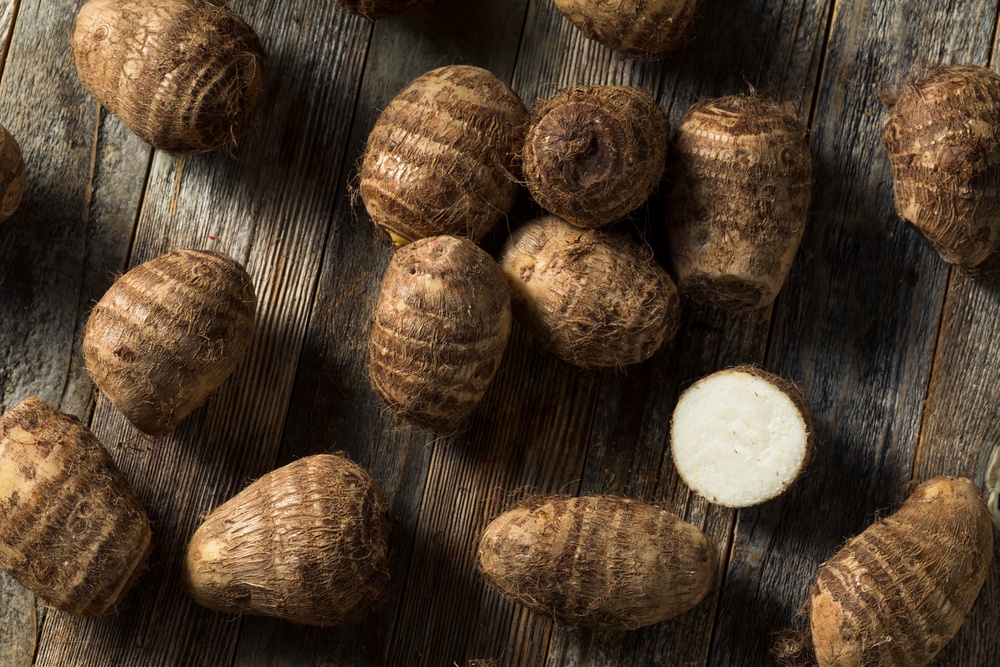I have always been curious about what jellyfish taste like. They are such fascinating creatures, with their tentacles and gelatinous bodies. But can they really be eaten?
And if so, what do they taste like? In this article, I will explore the world of jellyfish as food and answer the question: what does jellyfish taste like?
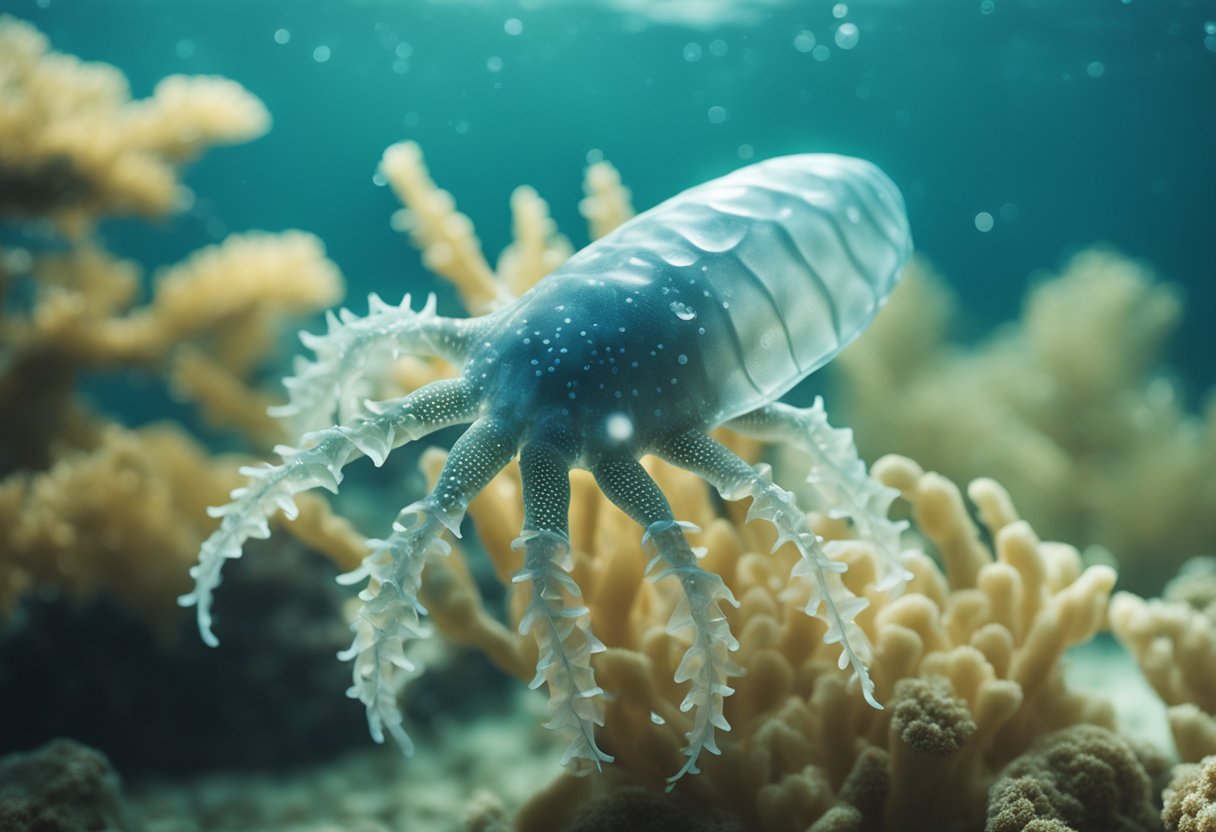
Jellyfish are a popular delicacy in many parts of the world, particularly in Asia. They are a rich source of protein, antioxidants, and other nutrients, and are believed to have various health benefits, such as lowering the risk of heart disease and improving skin health.
But despite their many nutritional benefits, some people are hesitant to try jellyfish due to their unusual texture and appearance.
So, what does jellyfish taste like? According to experts, jellyfish has a delicate flavor that is often compared to cucumber or oysters. It is slightly salty and has a mild taste, although larger species may have a hint of bitterness.
The texture of jellyfish is also unique, with some people describing it as similar to that of a glass noodle. In the following sections, we will explore the taste and texture of jellyfish in more detail, as well as its nutritional value, preparation methods, and safety considerations.
Key Takeaways
- Jellyfish has a delicate flavor that is often compared to cucumber or oysters, and a texture similar to a glass noodle.
- Jellyfish is a rich source of protein, antioxidants, and other nutrients, and is believed to have various health benefits.
- When preparing jellyfish, it is important to follow proper safety guidelines to avoid the risk of food poisoning or allergic reactions.
Understanding Jellyfish
Jellyfish are fascinating marine animals that belong to the phylum Cnidaria. They are invertebrates, which means they do not have a backbone. Jellyfish are bell-shaped and have tentacles that are used for capturing prey. These tentacles are lined with stinging cells, which are used to immobilize their prey.
Jellyfish come in a variety of species, each with its own unique characteristics. Some jellyfish are small and transparent, while others are large and colorful. The largest species of jellyfish can grow up to several meters in diameter.
The body of a jellyfish is made up of a bell-shaped structure called a medusa. This structure is made up of a soft, gelatinous substance that gives jellyfish their characteristic wobbly movement. The skin of a jellyfish is also quite delicate, which is why they are often referred to as “jellies.”
Jellyfish are found in oceans all over the world. They are often found in shallow waters, but can also be found in the deep sea. They are important members of the marine ecosystem and play a vital role in the food chain.
Despite their importance in the marine ecosystem, jellyfish are not commonly consumed by humans. However, in some parts of the world, jellyfish are considered a delicacy and are consumed as food.
The taste of jellyfish is often described as mild and slightly salty, with a texture that is chewy and slightly crunchy.
Jellyfish as Food
Jellyfish are not only fascinating creatures of the ocean, but they can also be consumed as food. Although not a common delicacy in many parts of the world, jellyfish has been a part of the Asian cuisine for centuries.
In countries like China, Japan, and Korea, jellyfish is often used as an ingredient in various dishes like salads, soups, and stir-fried dishes. It is usually served cooked or raw, and the texture can vary from crunchy to chewy.
When it comes to preparing jellyfish for consumption, it is important to note that the process can be time-consuming. Traditional methods of processing jellyfish into a dried food product can take between 19 and 37 days.
A common processing technique is the preservation of jellyfish, which may utilize salt curing to accomplish this, creating a dried finished product.
The taste of jellyfish is relatively mild and can be described as slightly sweet, slightly salty, and surprisingly creamy. Fresh jellyfish has a delicate, mild flavor that is somewhat salty and chewy.
However, larger white jellyfish can have a slightly bitter note. Overall, the taste is on the bland side and easily takes on the flavor of other seasonings or sauces it is paired with.
In terms of nutritional value, jellyfish is low in calories and fat, making it a healthy addition to any diet. It is also a good source of protein and contains essential nutrients like iron, zinc, and selenium.
In conclusion, while jellyfish may not be a common ingredient in many cuisines, it is an interesting and unique addition to any dish. Whether you are looking to try something new or are a fan of Asian cuisine, jellyfish is definitely worth a try.
Taste and Texture of Jellyfish
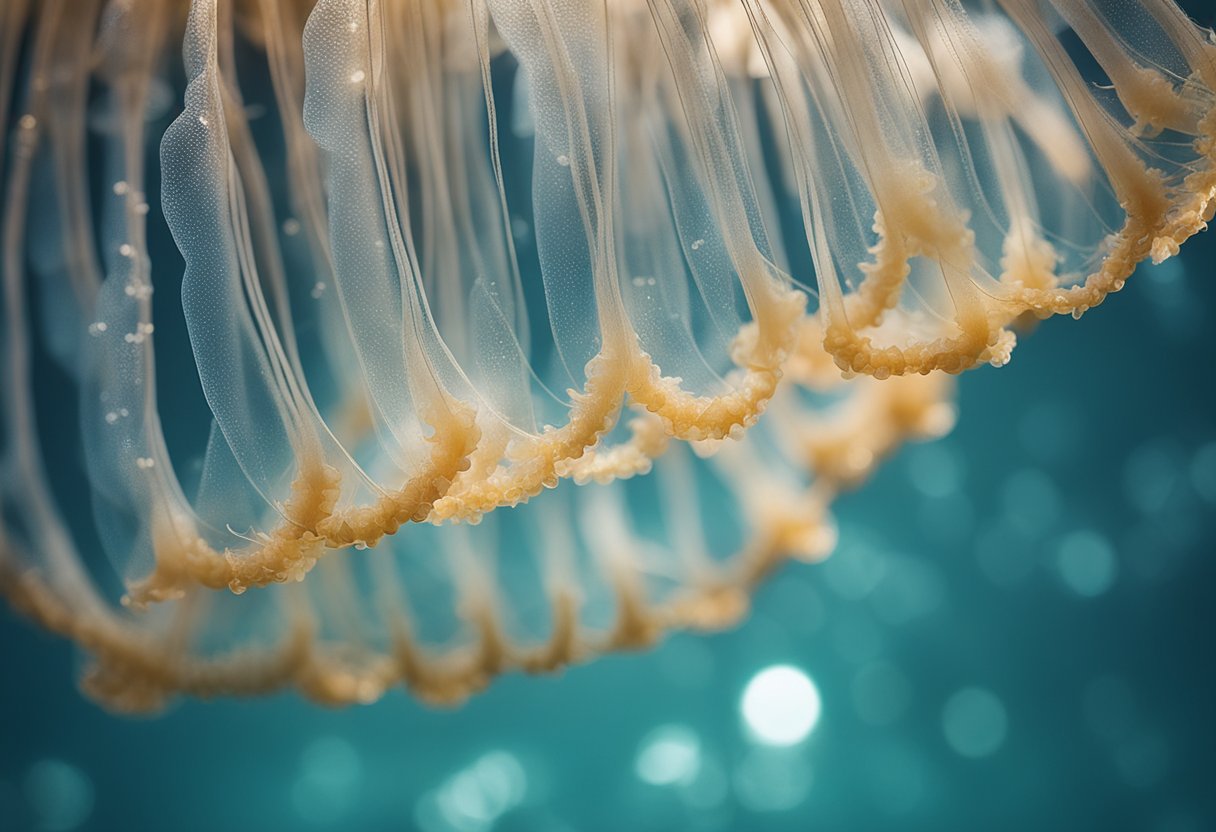
Jellyfish is a unique seafood that is gaining popularity in many parts of the world. As someone who has tasted jellyfish, I can say that it has a mild flavor and a unique texture that is quite different from other seafood.
The taste of jellyfish is often described as delicate and mild, with a slightly salty flavor. When cooked properly, it can be quite delicious. However, the taste can vary depending on the species of jellyfish and how it is prepared. For example, some larger white jellyfish can have a slightly bitter note.
In terms of texture, jellyfish is known for its chewy and crunchy texture. Fresh jellyfish has a firm, rubbery texture that requires a bit of chewing to break down.
However, when you continue to chew, the texture becomes softer and more tender. Dried jellyfish has a crunchy texture that can be quite satisfying to bite into.
When it comes to cooking jellyfish, it is important to properly prepare it to bring out its unique flavor and texture. Many people enjoy it raw, sliced thinly and served with soy sauce, ginger, garlic, and sesame oil.
Others prefer it cooked, either by boiling or stir-frying, which can help to enhance its flavor and texture.
Overall, I would say that jellyfish is a seafood that is definitely worth trying at least once. Its mild flavor and unique texture make it a fun and interesting addition to any seafood lover’s diet.
Preparation and Cooking Methods
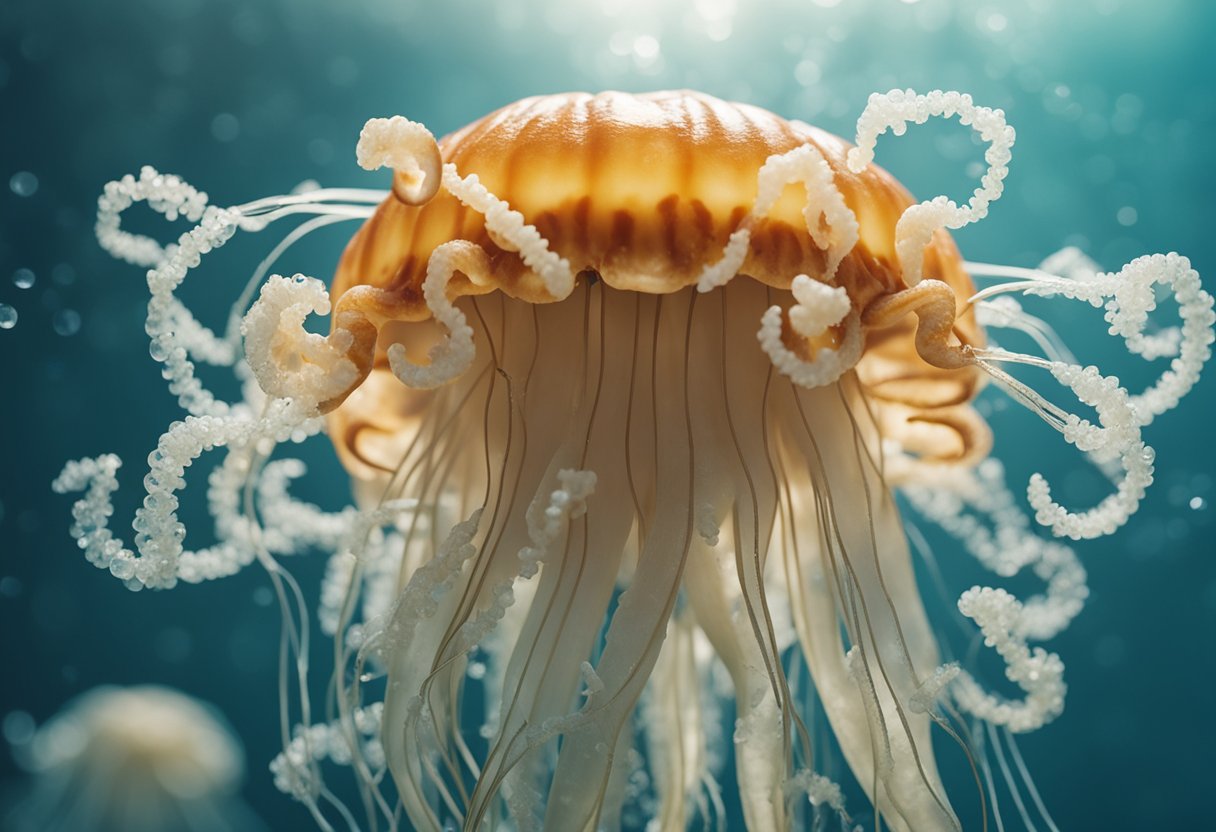
When it comes to preparing and cooking jellyfish, there are a few important steps to follow to ensure that it is safe to eat and tastes delicious. Here are some tips for preparing and cooking jellyfish:
Cleaning and Soaking
Before cooking jellyfish, it is important to clean it thoroughly to remove any salt or impurities. Start by rinsing the jellyfish under cold running water for several minutes.
Then, soak it in fresh water for at least an hour to remove any excess salt. Some people also recommend soaking the jellyfish in rice vinegar or lemon juice to improve its texture and flavor.
Boiling
One of the most common ways to cook jellyfish is by boiling it. To do this, bring a pot of water to a boil and add the jellyfish. Boil for 5-10 minutes, or until the jellyfish is tender and translucent. Be careful not to overcook the jellyfish, as this can cause it to become tough and rubbery.
Serving and Dressing
Once the jellyfish is cooked, it can be served in a variety of ways. Some people like to dress the jellyfish with a mixture of soy sauce, sesame oil, garlic, and other seasonings.
Others prefer to serve it with a simple dressing of oil and vinegar. Jellyfish can also be served with vegetables, such as cucumber or carrots, to add some crunch and freshness.
Recipes
If you’re looking for some inspiration for cooking with jellyfish, there are plenty of recipes available online. Some popular dishes include jellyfish salad, jellyfish stir-fry, and jellyfish soup. Whether you’re a seasoned cook or a beginner, there are plenty of ways to incorporate jellyfish into your meals.
Overall, jellyfish has a mild, slightly salty flavor and a chewy texture that can be enjoyed in a variety of dishes. By following these simple preparation and cooking methods, you can enjoy the unique taste and texture of jellyfish in your own home.
Nutritional Value and Health Benefits
Jellyfish is a low-calorie food that is rich in protein, minerals, and antioxidants. It is also a good source of nutrients like selenium, choline, and collagen.
A 100-gram serving of jellyfish contains only 5-10 calories, making it an excellent choice for those who want to maintain a healthy weight. It is also a good source of protein, with around 5 grams of protein per serving.
Jellyfish is rich in minerals like calcium, iron, and selenium, which are essential for maintaining healthy bones, teeth, and muscles. It is also a good source of choline, a nutrient that is important for brain health.
In addition to its nutritional value, jellyfish also has several health benefits. It contains collagen, a protein that is important for skin health and elasticity. Collagen can also help to improve joint health and reduce the risk of osteoarthritis.
Jellyfish is also rich in antioxidants, which can help to protect the body against damage from free radicals. Free radicals are unstable molecules that can cause damage to cells and contribute to the development of chronic diseases like cancer and heart disease.
Overall, jellyfish is a nutritious and healthy food that can provide several health benefits. It is low in calories, high in protein, and rich in minerals and antioxidants.
Safety and Risks of Consuming Jellyfish
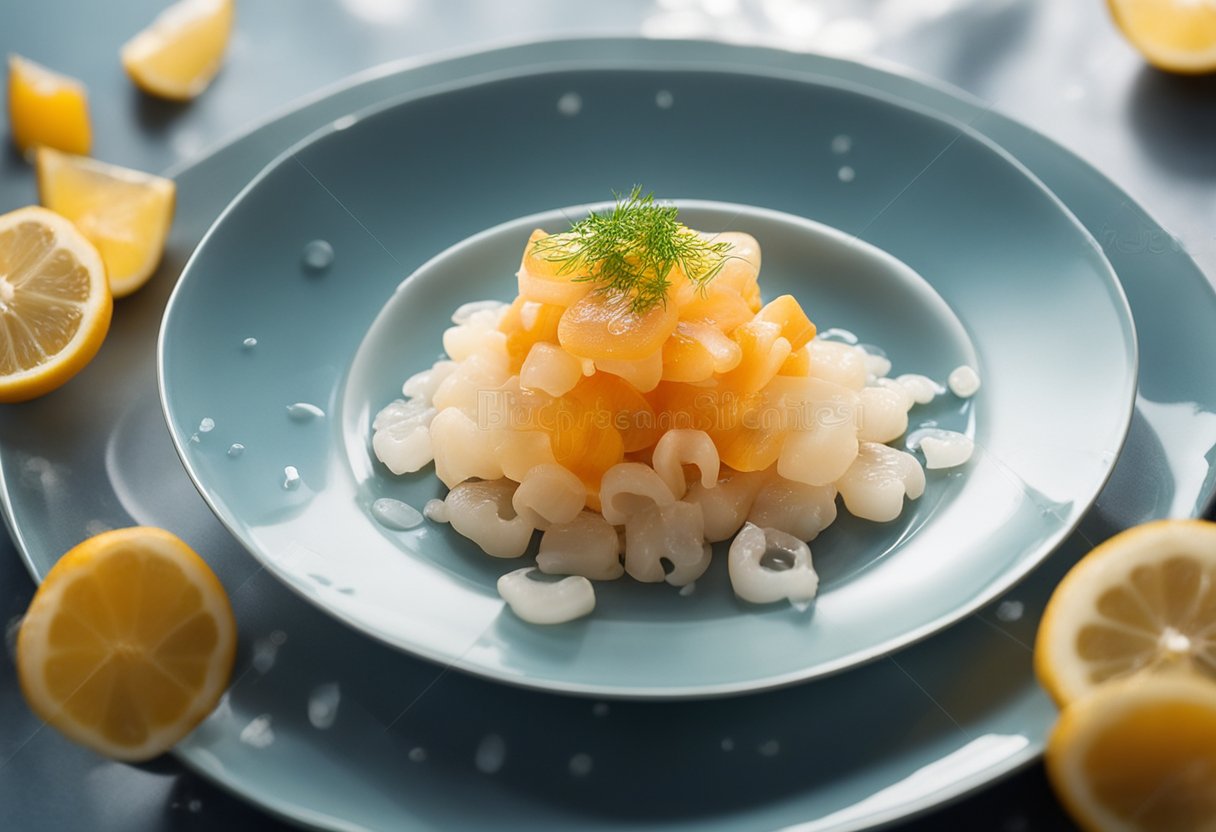
As with any type of seafood, there are potential risks associated with consuming jellyfish. However, when prepared properly, jellyfish can be safe for human consumption.
One of the main risks associated with jellyfish is their venom. While the tentacles of live jellyfish contain venom that can be dangerous, most jellyfish that are consumed have been processed and their venomous tentacles removed.
However, it is still important to be cautious when preparing and consuming jellyfish, as even a dead jellyfish can release venom if its cell structure remains intact after death.
Another risk associated with consuming jellyfish is the presence of toxins. Some species of jellyfish can contain high levels of heavy metals, such as mercury, which can be harmful to human health.
It is important to source jellyfish from reputable suppliers and to thoroughly wash and prepare the jellyfish before consuming it.
Despite these risks, jellyfish can have potential health benefits. Some studies have suggested that jellyfish may have anti-cancer properties, although more research is needed in this area.
Overall, while there are potential risks associated with consuming jellyfish, it can be safe for human consumption when prepared properly. As with any type of seafood, it is important to source it from reputable suppliers and to take appropriate precautions when preparing and consuming it.
Commercial Jellyfish Products
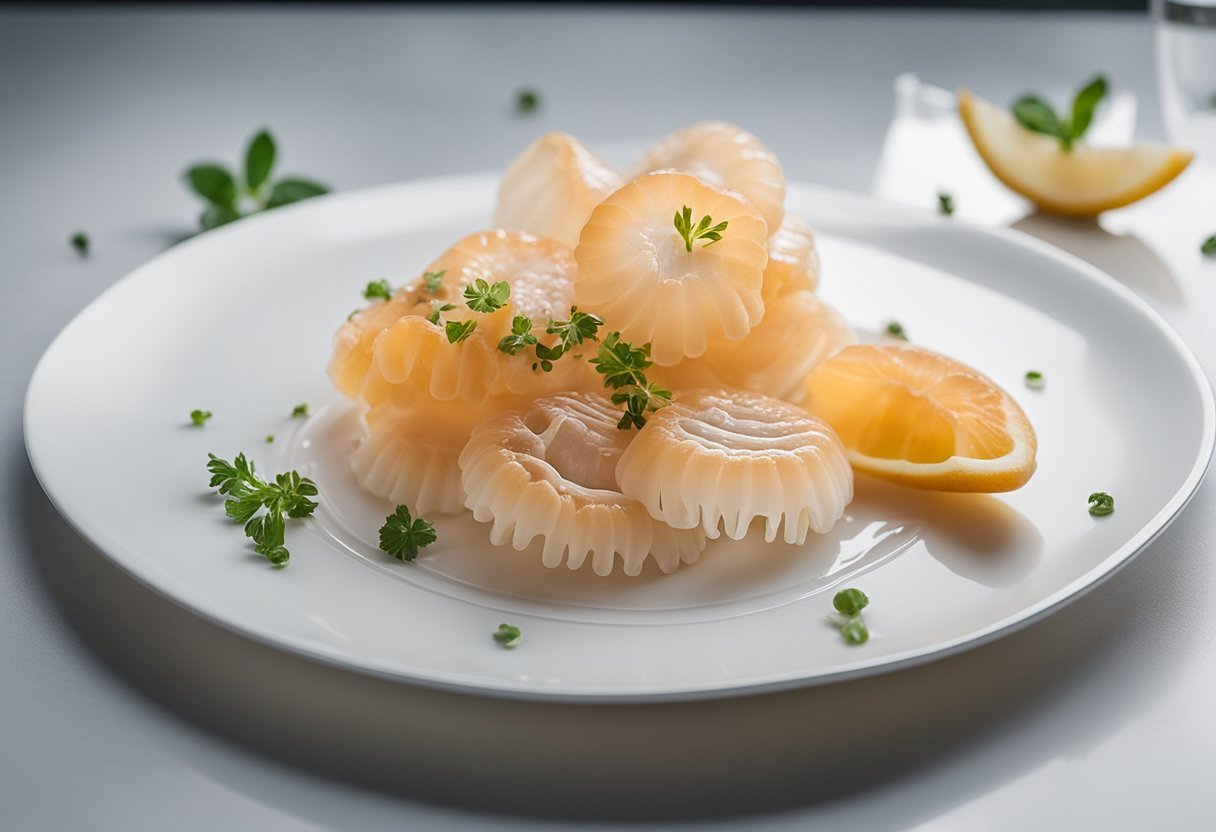
As jellyfish become more popular in cuisine, commercial jellyfish products are becoming more widely available. These products come in various forms, including dried jellyfish and jellyfish salad.
Dried jellyfish is a common ingredient in Asian cuisine and is often used in dishes such as stir-fries and soups. It is typically sold in packages and can be found in most Asian grocery stores. When buying dried jellyfish, it is important to pay attention to the age and color of the jellyfish.
Older jellyfish tend to be tougher and have a stronger flavor, while younger jellyfish are more tender and have a milder flavor. The color of the jellyfish can also indicate its age, with yellow jellyfish being younger and darker jellyfish being older.
Jellyfish salad is a newer product that is becoming increasingly popular in Western cuisine. It is typically made with fresh or marinated jellyfish and can be found in many specialty food stores and restaurants.
When buying jellyfish salad, it is important to pay attention to the size of the jellyfish. Smaller jellyfish tend to be more tender, while larger jellyfish can be tougher and have a slightly bitter taste.
Overall, commercial jellyfish products can be a great way to try this unique ingredient in your cooking. Just be sure to pay attention to the age, color, and size of the jellyfish to ensure that you get the best possible flavor and texture.
Jellyfish in Different Cultures
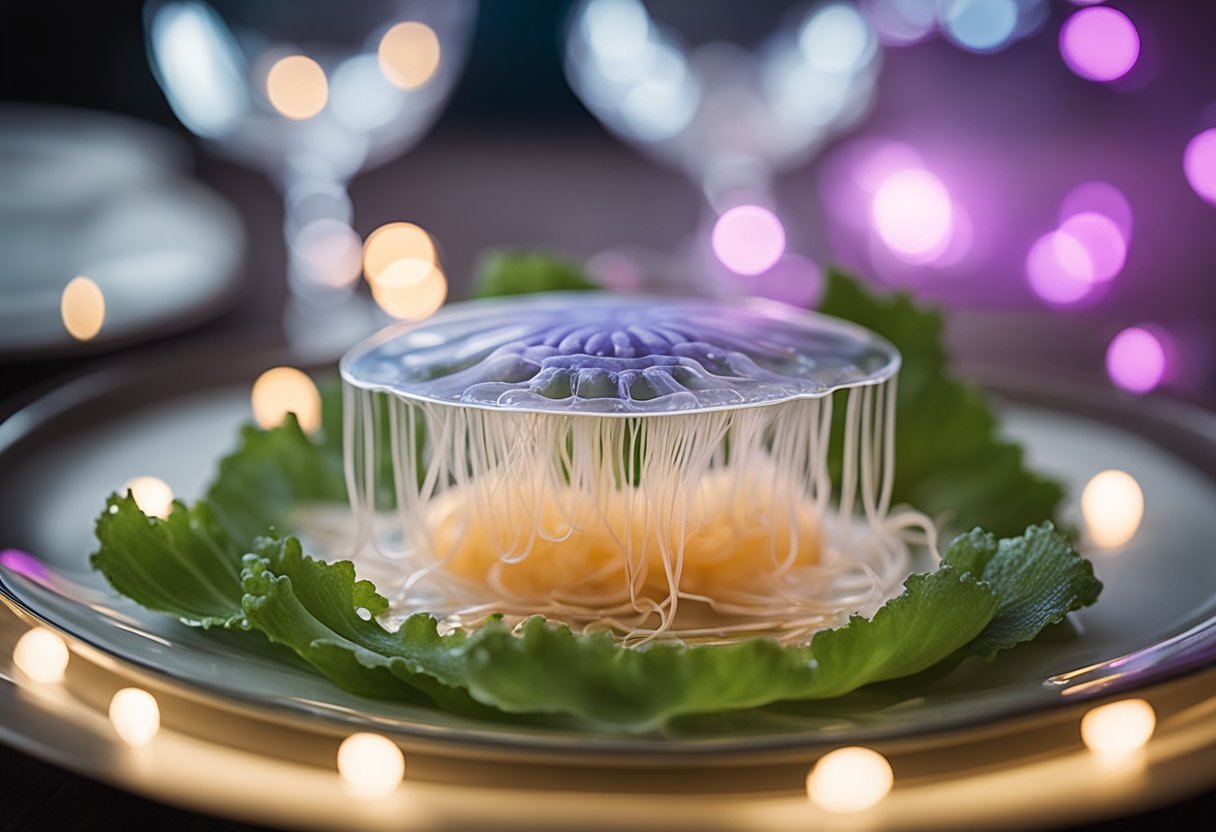
Jellyfish is a delicacy that is enjoyed in many parts of the world, especially in China, Japan, and other Asian countries. In these cultures, jellyfish is often served as a cold appetizer or salad.
In China, jellyfish is known as “hai zhe,” which means “sea vegetable.” It is often served with sesame oil, soy sauce, and vinegar. The texture of jellyfish is chewy and slightly crunchy, and its flavor is mild and slightly sweet.
In Japan, jellyfish is called “kurage,” and it is typically served raw. It is often marinated in a mixture of soy sauce, sake, and mirin, which gives it a slightly sweet and salty flavor. The texture of raw jellyfish is slippery and slightly crunchy.
In other Asian countries, such as Korea and Vietnam, jellyfish is also a popular dish. In Korea, it is often served as a side dish with spicy sauce, while in Vietnam, it is used in salads and soups.
While jellyfish may not be a common food in Western cultures, it is gaining popularity as a unique and exotic dish. It is important to note that not all jellyfish species are edible, and some can be poisonous. Therefore, it is essential to only consume jellyfish from reputable sources and to prepare it properly.
Overall, the taste of jellyfish can vary depending on its preparation and the culture in which it is consumed. Whether served raw or cooked, jellyfish is a unique and intriguing ingredient that adds a touch of exoticism to any dish.
The Future of Jellyfish Consumption
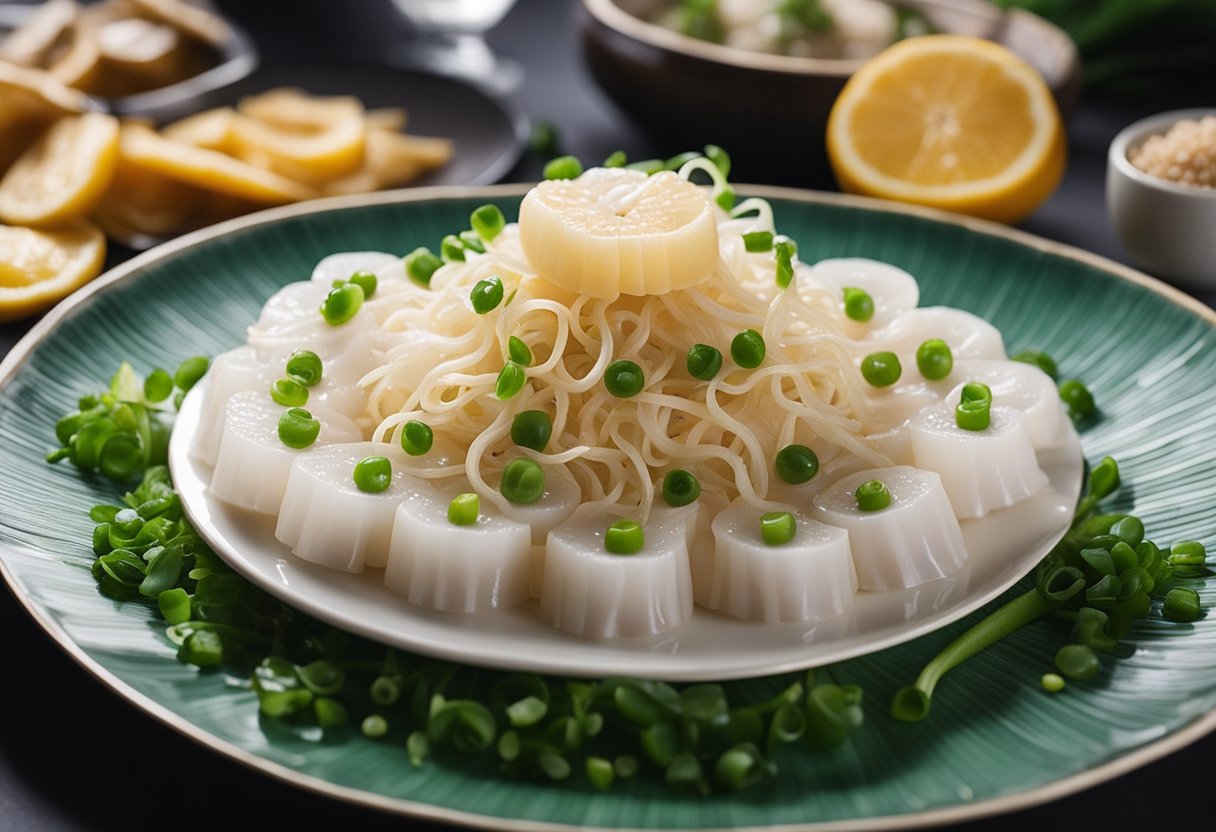
As the world population continues to grow, the demand for food increases, and traditional sources of protein become more expensive and scarce. This has led to the exploration of alternative protein sources such as jellyfish.
Jellyfish is a low-cost, high-protein food source that can be found in abundance in our oceans. It is also sustainable and environmentally friendly, as it requires minimal resources to produce. As a result, jellyfish consumption is becoming increasingly popular in many parts of the world.
However, there are some challenges that need to be addressed before jellyfish can become a mainstream food source. One of the main challenges is the taste.
While some people enjoy the taste of jellyfish, others find it bland or unappetizing. To overcome this challenge, new recipes and flavor combinations need to be developed to make jellyfish more appealing to a wider audience.
Another challenge is the safety of consuming jellyfish. Some species of jellyfish can be toxic to humans, and there is a risk of contamination from pollutants in the water. To ensure the safety of jellyfish consumption, proper harvesting and processing techniques need to be implemented.
In addition, there are concerns about the impact of jellyfish harvesting on the marine ecosystem. Overfishing of jellyfish can disrupt the balance of the ocean ecosystem and have negative consequences for other marine life.
Sustainable harvesting practices need to be developed to ensure that the harvesting of jellyfish does not harm the environment.
Overall, the future of jellyfish consumption looks promising. With the right investment in research and development, jellyfish could become a viable and sustainable food source for humans.
However, it is crucial that we address the challenges and concerns associated with jellyfish consumption to ensure that it is safe, sustainable, and appealing to a wider audience.
Frequently Asked Questions
What countries commonly consume jellyfish?
Jellyfish is a popular dish in many Asian countries, particularly China, Japan, and Korea. It is also consumed in some parts of Europe and the United States.
What is the nutritional value of jellyfish?
Jellyfish is a low-calorie, low-fat, and low-cholesterol food that is high in protein, vitamins, and minerals. It is a good source of calcium, magnesium, potassium, and iron.
Can jellyfish be eaten raw?
Yes, jellyfish can be eaten raw, but it is usually prepared by soaking it in salt water or vinegar to remove its saltiness and to improve its texture.
What are some popular jellyfish recipes?
Jellyfish can be prepared in a variety of ways, such as in a salad, stir-fried with vegetables, or served with noodles. Some popular recipes include jellyfish salad with sesame oil and vinegar, jellyfish stir-fry with mixed vegetables, and jellyfish with cucumber and scallions.
How does the taste of jellyfish compare to other seafood?
Jellyfish has a mild and slightly salty taste with a chewy texture. It is often compared to the taste and texture of squid or octopus.
Are there any health risks associated with consuming jellyfish?
Jellyfish can be a potential health risk if not prepared properly. Some species of jellyfish are toxic and can cause severe allergic reactions, while others may contain high levels of heavy metals or pollutants.
It is important to purchase jellyfish from a reputable source and to follow proper preparation and cooking methods to ensure safety.





